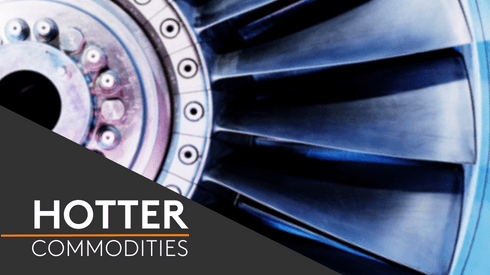ERMA will help to secure the financing needed for development of the Amitsoq project, GreenRoq reported on Wednesday February 8.
The alliance was co-founded by the EU and raw material consortium EIT RawMaterials, which manages it. It has an investment channel for raw materials projects and has made a detailed evaluation of the Amitsoq asset.
“Not only does [ERMA’s support] provide validation from the raw materials consortium of the fundamental qualities of the project,” GreenRoc chief executive officer Stefan Bernstein said, “but it opens the door to new investment and partnership opportunities across all stages of Amitsoq’s future development while we progress toward commercial production.”
The project has an estimated mineral resource of 23.05 million tonnes at an average grade of 20.41% graphitic carbon, giving a total graphite content of 4.71 million tonnes, the company said on January 23 this year.
The latest estimate was almost three times the size of the estimate in 2022.
“GreenRoc’s graphite resource is of global importance and, together with the company’s strategy, will enable the EU to achieve a certain level of independence for the electrical vehicle supply chain,” Bernd Schäfer, managing director of EIT RawMaterials, and Dr Massimo Gasparon, director of ERMA, said in a letter reported by GreenRoc.
“ERMA has approved the Amitsoq graphite project and will support its development and financing to produce these critical raw materials for the benefit of the EU,” they added.
EIT RawMaterials is an EU body and is part of the European Institute of Innovation and Technology (EIT).
“ERMA’s vision is to secure access to critical and strategic raw materials, advanced materials, and processing know-how for the EU,” according to its website.
Other graphite companies that belong to ERMA include NextSource Materials, Syrah Resources and Volt Resources.
Graphite projects aimed at meeting increasing demand
The Amitsoq graphite project is intended to meet the demand growth in Europe for graphite, and in particular the expanding active anode material market.
The European market for fine graphite flake – the feedstock for spherical, active anode material graphite – has been subdued due to weak demand and strong supply from Africa.
Fastmarkets’ latest assessment of the price for graphite flake, 94% C, -100 mesh, cif Europe, was $750 per tonne on February 2, stable since January 12. This was the lowest since it was assessed at $745 per tonne on November 11, 2021.
The corresponding price asssessment for graphite, spherical, 99.95% C, 15 microns, fob China, was $2,500-2,800 per tonne on February 2, the lowest since it was $2,350-2,800 per tonne on September 16, 2021.
Fastmarkets currently only assesses the spherical graphite market on an FOB China basis due to the current domination of global supply by China.
ERMA supported Greenland Resources on June 13, 2022, in its efforts to securing finance for the Malmbjerg molybdenum project.
The Malmbjerg project could cover around 30% of Europe’s molybdenum use, Greenland Resources said on its website.
Molybdenum is used in high-performance steel, such as is required in wind turbines. Its price has reached a 17-year high in Europe on tight supply from South Korea and Armenia.
Fastmarkets’ assessment of the price for ferro-molybdenum, 65% Mo min, in-whs Rotterdam, rose to $101-110 per kg Mo on February 1 this year, the highest since 2005, but has since softened to $92.50-97.00 per kg Mo in the latest assessment on February 8.
Understand the dynamics of the graphite market
Keep up with the latest news, market intelligence and trends in the graphite market when you visit our dedicated graphite market analysis page





